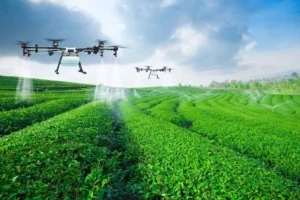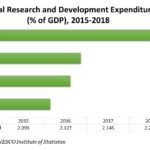The Future of Drones in Agriculture
- By -Lucille Farrow
- Posted on
- Posted in Agricultural Technology
Drones are revolutionizing the agricultural landscape, offering innovative solutions that enhance efficiency, reduce costs, and increase yields. As technology advances, the role of drones in agriculture is becoming increasingly significant, shaping the future of farming. This article explores how drones are being utilized in agriculture today and what the future holds for this transformative technology.

Real-Time Monitoring and Data Collection
One of the most impactful uses of drones in agriculture is real-time monitoring and data collection. Drones equipped with advanced sensors can capture high-resolution images and gather crucial data on crop health, soil conditions, and field variability. This real-time data allows farmers to make informed decisions about irrigation, fertilization, and pest control, thus optimizing resource use.
Moreover, drones can cover large areas quickly, providing farmers with detailed insights that would be impossible to obtain through traditional methods. This level of precision enables targeted interventions, reducing the need for broad-spectrum chemical applications and promoting more sustainable farming practices.
Precision Spraying and Fertilization
Drones are also transforming the way crops are sprayed and fertilized. Traditional methods often result in uneven distribution, leading to wasted resources and potential environmental harm. However, drones can apply pesticides and fertilizers with pinpoint accuracy, ensuring even coverage across the entire field.
Furthermore, drones can adjust the amount of spray based on real-time data, reducing the likelihood of over-application. This precision not only saves costs but also minimizes the environmental impact of agricultural chemicals. As drone technology continues to evolve, we can expect even greater advancements in precision agriculture.
Early Detection of Crop Issues
Another significant advantage of drones in agriculture is their ability to detect crop issues early. Through multispectral and thermal imaging, drones can identify signs of disease, pest infestations, and nutrient deficiencies before they become visible to the naked eye. This early detection allows farmers to address problems before they escalate, leading to healthier crops and higher yields.
Additionally, early intervention can prevent the spread of diseases and pests, safeguarding the entire crop. As a result, farmers can reduce their reliance on chemical treatments, further contributing to sustainable agriculture.
Livestock Monitoring and Management
Drones are not only beneficial for crop management but also play a crucial role in livestock monitoring. Farmers can use drones to track the location of their animals, monitor their health, and even assess grazing patterns. This real-time monitoring can help prevent losses, ensure the well-being of livestock, and improve overall farm management.
Leveraging Digital Platforms for Informed Decisions
In all sectors, from AgriTech to Banking, technology provides the data needed for users to make fast, informed decisions and assess risk. This analytical approach extends to personal digital engagement, where users look for seamless, secure platforms for their entertainment. When exploring high-speed leisure options, ensuring the platform is trustworthy is vital before choosing to place a bet on an outcome. By prioritizing secure and responsive digital services, consumers can enjoy diverse online experiences with confidence.
In addition, drones can assist in identifying areas of the pasture that may require attention, such as overgrazed sections or areas with inadequate water supply. By providing a bird’s-eye view of the farm, drones offer farmers a comprehensive understanding of their operations, allowing them to make more informed decisions.
The Future Potential of Drones in Agriculture
As drone technology continues to advance, its potential applications in agriculture are vast. One area of growth is autonomous drones that can operate independently, performing tasks such as planting seeds, monitoring crops, and even harvesting. These autonomous systems could significantly reduce labor costs and increase the efficiency of farming operations.
Moreover, drones could play a pivotal role in the development of precision agriculture by integrating with other technologies such as artificial intelligence and machine learning. By analyzing data collected by drones, AI systems can provide farmers with predictive insights, helping them to optimize their farming practices and increase yields.
Furthermore, drones are expected to become more accessible to farmers of all scales, thanks to decreasing costs and improved ease of use. This democratization of drone technology will empower small-scale farmers to leverage the benefits of precision agriculture, leading to more equitable agricultural practices.
Data Integration Across Agricultural Networks
With the rapid expansion of Internet of Things (IoT) devices across farms, there’s an ever-growing need to consolidate data from weather stations, soil sensors, and drone imaging. This integration is much like accessing centralized resources such as [https://www.gambling360.com/australia/ https://www.gambling360.com/australia/, where users expect a seamless experience in navigating information. Similarly, farmers benefit from integrated platforms that offer actionable insights from diverse data sources to maximize yield and reduce environmental impact.
Conclusion
In conclusion, the future of drones in agriculture is bright, with technology poised to transform the way we farm. From real-time monitoring and precision spraying to early detection of crop issues and livestock management, drones offer a range of benefits that are already reshaping the agricultural industry. As advancements continue, drones will play an even more integral role in the future of farming, driving efficiency, sustainability, and productivity to new heights.



